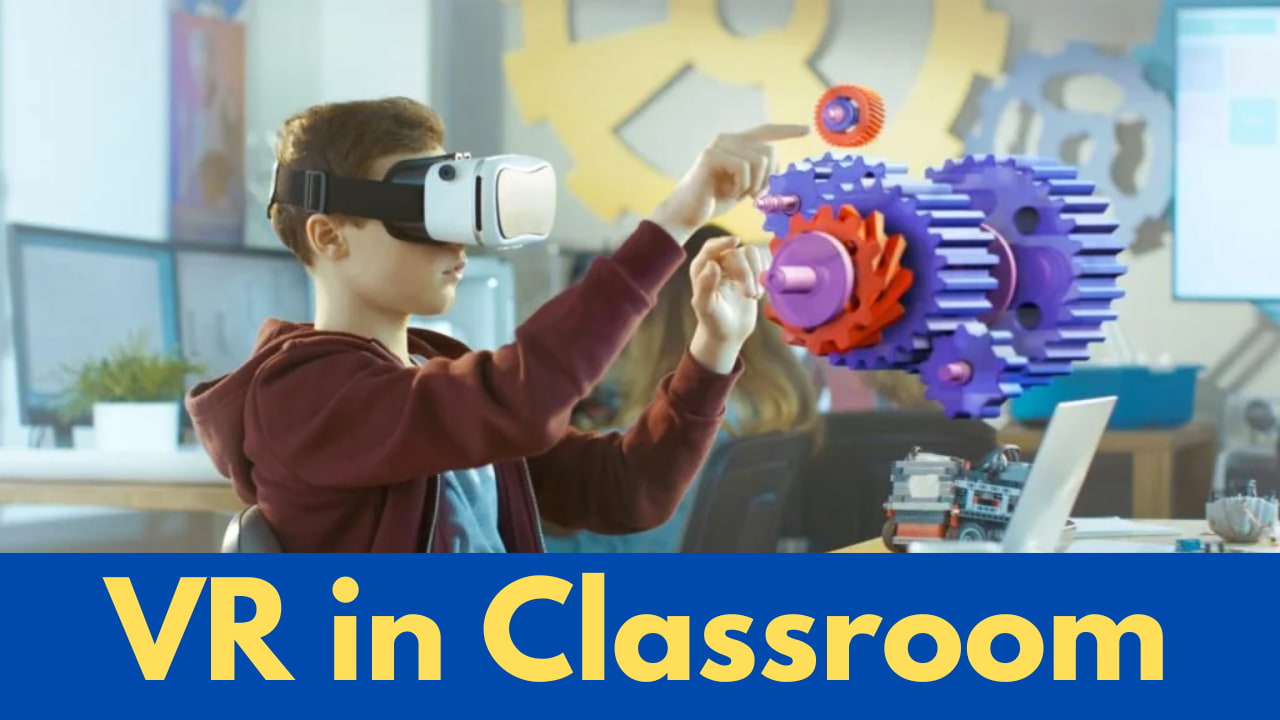Imagine sitting in your classroom and suddenly being transported to the bottom of the ocean, walking through ancient Egyptian pyramids, or exploring the surface of Mars! This is all possible with the help of Virtual Reality (VR), a new technology that is changing how students learn in schools.
Virtual Reality (VR) is a computer-generated world that you can enter by wearing special goggles called VR headsets. It makes you feel like you are really there, even though you’re still in the classroom. Let’s explore how VR is shaping the future of classroom learning and making it more fun and exciting!
What is Virtual Reality (VR)?

Virtual Reality (VR) is a type of technology that lets you experience and interact with a 3D world using special glasses or headsets. It feels like you are in a completely different place, even though you are not physically there. In VR, you can look around, move, and even pick things up, just like in real life!
How Does VR Work in the Classroom?
In the classroom, VR can be used to create virtual lessons where students can explore places, concepts, or ideas in a whole new way. Instead of just reading about something in a book, VR lets students experience it as if they were there.
For example:
- In science class, students can travel inside the human body to see how organs work.
- In history class, they can walk around in ancient civilizations like Rome or Greece.
- In geography class, students can visit different countries and learn about their cultures and landmarks.
With VR, lessons come to life, making learning more fun and engaging.
Benefits of Using VR in the Classroom
There are many reasons why VR is becoming a popular tool in classrooms. Let’s look at some of the main benefits:
1. Makes Learning Fun and Engaging
One of the biggest advantages of VR is that it makes learning more fun! Instead of just sitting at a desk and reading from a textbook, students can experience the subject firsthand.
For example, instead of just reading about space exploration, students can use VR to experience what it’s like to be an astronaut in outer space. This makes the learning process much more exciting and enjoyable.
2. Helps Understand Difficult Concepts
Some subjects can be difficult to understand, like complex math problems or how the solar system works. VR makes it easier by showing students visual examples and letting them explore these concepts in 3D.
For instance, if students are learning about volcanoes, they can use VR to see how a volcano erupts and what happens inside. This makes difficult topics easier to grasp.
3. Encourages Active Learning
With VR, students are not just listening to the teacher or reading a book—they are actively participating in the lesson. This hands-on approach encourages students to explore, ask questions, and learn at their own pace.
For example, in a VR science lab, students can perform virtual experiments, like mixing chemicals or dissecting a frog, without needing real lab equipment. This active learning helps them remember the lesson better.
4. Accessible Learning for All
VR also helps make learning more accessible to students who may have physical or learning disabilities. For example, students who cannot go on field trips can still experience those places through virtual field trips.
VR allows everyone to learn in a way that suits their abilities, making the classroom a more inclusive place for all students.
How VR is Used in Different Subjects
VR can be used in almost any subject to enhance learning. Let’s take a look at how VR is helping in different subjects:
1. Science
In science, VR can take students to places they could never visit in real life, like the inside of a cell or the surface of the moon. They can see how plants grow, how animals live, or how different planets in the solar system look up close.
2. History
In history, VR can transport students to the past, allowing them to experience historical events firsthand. They can walk through ancient cities, visit historical landmarks, or even witness important moments in history, like the signing of the Declaration of Independence.
3. Geography
In geography, VR helps students explore different countries and environments. They can fly over mountains, visit deserts, or explore forests and oceans. This helps students learn more about the world without leaving the classroom.
4. Art and Design
In art, students can use VR to create 3D sculptures, paint in a virtual world, or visit famous museums and see great works of art up close. This brings creativity to a whole new level.
The Future of VR in Learning
As technology continues to advance, VR will become even more common in classrooms. It is already being used in some schools, but soon it could be part of every school’s learning experience.
In the future, students might use VR to attend classes from home, go on virtual field trips, or even create their own virtual worlds. The possibilities are endless!